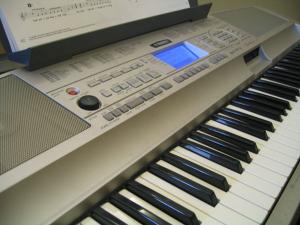
It is essential that pupils have free access to an instrument on which to practice. The following guidelines should give you some idea of what to look for; if you would like advice on the suitability of an existing instrument or the purchase of a new one please do not hesitate to contact me.
Keyboards
I recommend Yamaha keyboards, as this is the make used in lessons. There are many different models available but minimum requirements are as follows:
- at least 49 full sized keys
- auto accompaniment/auto chord feature
- intro/ending and fill features
- LCD display
- a variety of styles and voices
- recording facilities
- a touch sensitive feature is useful
Essential accessories:
- an adjustable stand – most tables are too high
- mains electricity lead – keyboards ‘eat’ large and expensive batteries!
- headphones are useful for silent practice.
Pianos
An acoustic (ie non electric, strung type) is ideal. I appreciate that this is not always possible as acoustic pianos take up a considerable amount of space, can only really be placed on the ground floor and are expensive. In addition, they need maintaining and should be tuned regularly, at least once a year. If an acoustic piano is not an option, look for a digital piano that has a minimum of 61 touch sensitive and preferably weighted keys. Well respected makes are Yamaha - both their Clavinova and YDP range, Casio, Roland and Korg.
In my opinion a good digital piano is always going to be preferable to an old acoustic piano that used to belong to a distant relative, hasn’t been tuned in living memory and has several ‘twangy’ or even non-working or missing keys!

